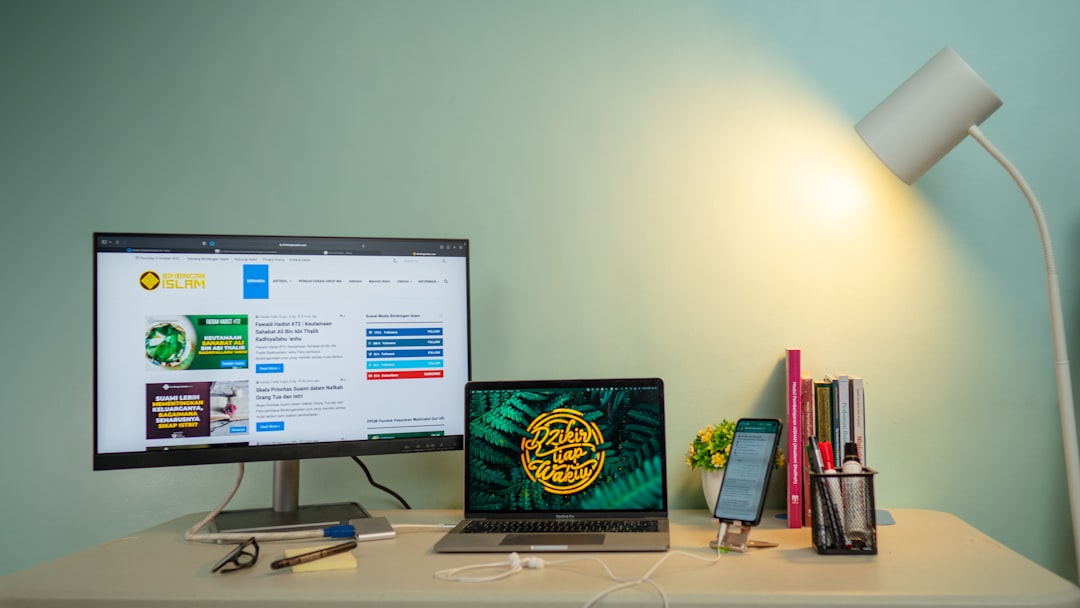As we go through our daily routines, it’s easy to get caught up in the cycle of reacting to emails, phone calls, and other unexpected tasks that arise. Before we know it, the day has flown by, and we haven’t made the progress we intended. This is where time blocking comes in – it gives us a powerful tool to proactively plan our work and ensure that we’re making the most of each day.
Simply put, time blocking involves dividing your day into specific chunks of time and assigning specific tasks or activities to each block. By dedicating focused periods of time to specific tasks, we can boost our productivity and make progress towards our goals. In this blog post, we’ll explore the power of time blocking and how you can implement this strategy to optimize your workday.
Through a series of actionable tips and insights, you’ll learn how to establish a productivity mindset, define your goals and tasks, schedule your ideal day, create a time blocking system, maximize your productivity during time blocks, and put time blocking into practice. So, let’s get started and learn how to unlock the power of time blocking!
Establishing a Productivity Mindset
As we delve into the world of time blocking, it’s important to establish a productivity mindset. This means focusing on priorities and removing distractions that can hinder our ability to maximize our time.
When it comes to productivity, priority is key. It’s essential to identify tasks and goals that are most important and prioritize them accordingly. By doing so, we’re able to direct our attention and energy towards tasks that will have the biggest impact on our overall productivity and success.
One of the biggest threats to our productivity is distractions. Whether it’s social media notifications, email alerts or colleagues stopping by our desk, we can all agree that distractions can be harmful. To combat this, it’s important to identify what distracts us and create strategies to minimize or eliminate them. This can include turning off notifications, working in a quiet space, or scheduling blocks of uninterrupted work time.
By establishing a productivity mindset and prioritizing tasks while minimizing distractions, we create an environment that’s conducive to time blocking and overall success in our work and personal lives.
This means focusing on priorities and removing distractions that can hinder our ability to maximize our time.
Defining Goals and Tasks
In order to make the most out of your time blocking schedule, it is essential to have a clear understanding of your goals and tasks. This involves setting SMART goals and breaking them down into manageable steps. SMART goals are specific, measurable, achievable, relevant, and time-bound. By setting goals that meet these criteria, you are better able to stay focused and motivated.
Once you have established your goals, it is important to break them down into smaller, more manageable tasks. This allows you to tackle one step at a time, rather than feeling overwhelmed by the larger goal. By breaking tasks down into smaller, actionable items, you can also track your progress more effectively, which can help to keep you motivated and on track.
In order to define your goals and tasks, take some time to reflect on what is most important to you. Consider what you want to achieve in the short-term and long-term, and how these goals align with your overall vision for your life. By having a clear vision and understanding of what you want to achieve, you can more easily identify the tasks that will help you get there.
Additionally, it is important to regularly review your goals and tasks to ensure that they remain relevant and aligned with your larger vision. As you work through your time blocking schedule, you may find that your priorities shift or that unforeseen obstacles arise. By regularly reassessing your goals and tasks, you can adjust your schedule as needed to stay on track and achieve success.
Overall, defining your goals and tasks is a critical component of any effective time blocking strategy. By setting SMART goals and breaking them down into manageable steps, you can stay focused and motivated, while also increasing your chances of achieving success.
By having a clear vision and understanding of what you want to achieve, you can more easily identify the tasks that will help you get there.
Scheduling Your Ideal Day
Scheduling your day is an essential part of time blocking. It helps to ensure that you stay on track, meet deadlines, and achieve your goals. Here are some tips for scheduling your ideal day:
Aligning with Circadian Rhythms
Did you know that your body follows a natural rhythm called the circadian rhythm? This rhythm affects your sleep patterns, energy levels, and ability to concentrate throughout the day. By scheduling your activities around your circadian rhythm, you can maximize your productivity and achieve more in less time.
Start by identifying your peak productivity hours. These are the times of day when you feel most alert and focused. For most people, this is in the morning. Try to schedule your most important tasks during your peak hours, and save less demanding tasks for later in the day when your energy levels are lower.
Incorporating Flexibility
When creating your schedule, it’s important to leave some room for flexibility. Unexpected events can arise, and you don’t want to be thrown off track by a minor disruption. To incorporate flexibility in your schedule, set aside some time each day for unplanned tasks and emergencies. This way, you can handle unexpected events without disrupting your entire day.
Another way to build flexibility into your schedule is to avoid overbooking yourself. Leave some free time between tasks, so you have time to regroup and refocus before moving on to the next item on your to-do list.
Choosing the Right Tools
There are several tools you can use to schedule your time effectively. Some popular options include:
- Calendar apps like Google Calendar or Outlook
- Task management tools like Trello or Asana
- Time tracking apps like RescueTime or Toggl
Find the tools that work best for you, and integrate them into your time blocking routine. Consider using tools that offer reminders and notifications, so you don’t forget important tasks or deadlines.
Consulting Calendars and Schedules
Before scheduling your day, consult your calendar and schedule to see what commitments you already have in place. This includes work meetings, appointments, and other scheduled events. By taking these commitments into account, you can avoid overcommitting yourself and ensure that you have enough time to complete all of your tasks.
When scheduling your day, be realistic about the amount of time each task will take. Don’t try to schedule too many tasks into one day or underestimate the amount of time each task will require. Instead, break down larger tasks into smaller, more manageable steps, and assign each step to a specific time block.
With these tips in mind, you can create a schedule that maximizes your productivity, helps you meet your goals, and leaves room for flexibility. By incorporating time blocking into your routine, you can achieve more in less time and feel more accomplished at the end of each day.
This rhythm affects your sleep patterns, energy levels, and ability to concentrate throughout the day.
Creating a Time Blocking System
When it comes to maximizing your productivity, a time blocking system can be a game changer. This technique involves breaking up your day into blocks of time, each devoted to a specific task or activity. By doing so, it becomes much easier to stay focused and make sure that everything that needs to get done actually does get done.
But how do you actually create a time blocking system that works? The first step is to choose the right tools. You’ll need a calendar or scheduling app that allows you to easily create and manage blocks of time. There are plenty of options out there, from free apps like Google Calendar to paid platforms like Trello or Asana.
Once you’ve chosen your tool, it’s time to start putting your schedule together. Begin by consulting your calendar and schedule to see what commitments you need to work around. From there, start filling in blocks of time for specific tasks or activities. You’ll want to be realistic about how long each task will take, and make sure you’re leaving enough time for breaks and downtime as needed.
It can also be helpful to color code your time blocks to make them easier to see and understand at a glance. For example, you might use green for work-related tasks, blue for personal appointments, and yellow for exercise or self-care activities.
Remember, your time blocking system should be flexible and adaptable to changes in your schedule. If something unexpected comes up, don’t be afraid to shift around your blocks or postpone some tasks until later in the day or week.
The key to making a time blocking system work is sticking with it consistently. Try it out for a few weeks and see how it impacts your productivity and well-being. With practice and patience, you’ll soon be a time blocking pro!
Maximizing Productivity During Time Blocks
Now that you’ve established your productivity mindset, defined your goals and tasks, scheduled your ideal day, and created a time blocking system, it’s time to focus on maximizing productivity during those time blocks. Here are some tips to help you stay focused and efficient during your time blocks.
Staying Focused
First and foremost, it’s important to eliminate distractions during your time blocks. This means turning off notifications on your phone and computer, closing any unnecessary tabs or applications, and finding a quiet workspace where you can concentrate without interruptions. Consider using noise-cancelling headphones or ambient background noise to help drown out any distracting noises.
Another way to stay focused during your time blocks is to use the Pomodoro technique. This involves working for a set period of time (usually 25 minutes) followed by a short break (usually 5 minutes), and repeating this cycle several times. This helps to break up your work into manageable chunks and ensures that you stay focused during those 25-minute increments.
Finally, consider using a productivity app to help you stay on track. There are many apps available that can block distracting websites, track your time spent on tasks, and provide reminders to take breaks or switch tasks.
Taking Breaks
While it may seem counterintuitive, taking breaks during your time blocks can actually help to increase productivity. Stepping away from your work for a few minutes can give your brain a chance to rest and recharge, which can help you stay focused and motivated in the long run.
Consider taking a short walk, doing some stretches, or practicing mindfulness or meditation during your breaks. This can help to reduce stress and improve your overall well-being, which can have a positive impact on your productivity.
Remember, the key to maximizing productivity during time blocks is to find a balance between focused work and rest. By eliminating distractions, using the Pomodoro technique, and taking breaks when necessary, you can create a time blocking system that helps you achieve your goals and be more productive in your daily life.
Staying Focused
First and foremost, it’s important to eliminate distractions during your time blocks.
Conclusion: Putting Time Blocking into Practice
Now that we’ve covered the benefits of time blocking and how to implement it effectively, it’s time to put all this knowledge into practice. Remember that time blocking is a personal system, and what works for one person may not work for another.
To start, take some time to evaluate your current daily routine and how you spend your time. Look for areas where you can improve your productivity and incorporate time blocking. Start small and gradually work your way up to incorporating time blocking into your entire day.
One important aspect of time blocking is to stay flexible. Remember that unexpected events and issues will arise, and it’s important to adjust your schedule accordingly. However, don’t let these disruptions completely derail your time blocking routine. Stay focused and remain committed to your goals, while also allowing for some wiggle room in your schedule.
It’s also important to stay accountable. Share your time blocking system with friends or colleagues who can help hold you accountable and stay on track. Additionally, don’t be afraid to reassess and adjust your time blocking system as needed.
Incorporating time blocking into your daily routine can be a game changer for productivity and achieving your goals. Remember to focus on priorities, remove distractions, define SMART goals, schedule your ideal day, create a time blocking system, and maximize productivity during time blocks. By putting these principles into practice, you can take control of your time and achieve your goals with confidence.





